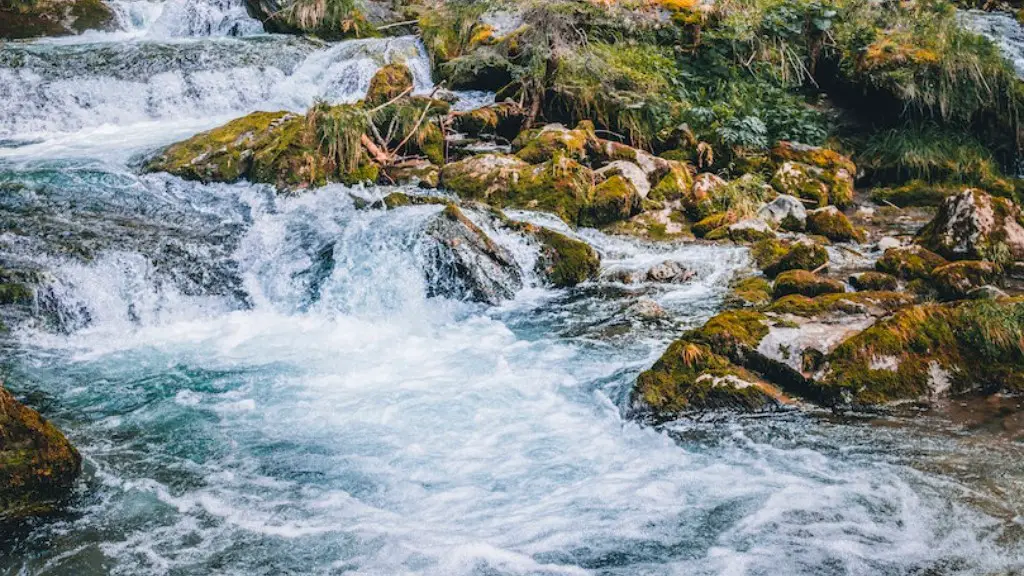Factual Overview
The mighty Mississippi, the fourth longest river in the world, winds oh-so-slowly through 10 states, from the northernmost point of Lake Itasca in Minnesota, to the delta in Louisiana where it empties into the Gulf of Mexico. It has an approximate length of 2,320 miles, and its waters are essential to a population of more than 18 million people. But could the Mississippi ever dry up? Could its waters reach a point where they can no longer sustain vegetation and the human settlements nearby?
Extensive Impact
The Mississippi River is a lifeline for many people who live around it and its tributaries. Farmers and businesses living near the river rely on its waters for irrigation and other activities to provide food and jobs. In the regions near its mouth, it supports the ecology of entire ecosystems, providing a habitat to over 300 bird and animal species. The river also serves as a means of transportation, carrying goods and resources from one place to another. Shipping and barge traffic on the Mississippi moves millions of tons of goods, from consumer goods and bulk products to liquid fuels and grains.
Dry Periods and Droughts
The Mississippi River has experienced many dry periods and droughts in its lifetime but has never completely gone dry. The catastrophic Great Mississippi Flood of 1927 stretched from Illinois to Louisiana, flooding millions of homes and burying hundreds of people alive. The waters receded quickly, causing another hardship for the people living around the river. The flood was so destructive that it really put the issue of whether the river could completely dry up onto the public’s tongue.
Has It Ever Gone Dry?
The Mississippi River has, in fact, never gone dry. There have been years when its water levels dropped significantly, and the low water levels have wreaked havoc on the people, plants and animals that rely on it. But rainfall eventually returned, and the river’s flow remained constant.
This is why much of the native vegetation along the river is able to withstand dry spells. There are species of plants and trees that are particularly hardy, such as cypress, sweetgum, cottonwood, willow and river birch, that are able to survive even the lowest levels of water.
The same cannot be said for man’s activities, which are dependent on the river for transportation and electricity. These activities can be brought to a standstill by low water levels, as is often seen during summer months.
Continuous Human Interference
The Mississippi River has always been a victim of human interference and many projects have been initiated to increase its depth and create a mean flow of water. Many of these projects have been stopped due to environmental concerns but they still have repercussions on the water levels of the river.
Dams have been built over the years to the control the flow of the river, resulting in artificial dry periods. Even in natural conditions, hot summer months can reduce its flow. The region of the river downstream of the confluence between the Ohio and the Mississippi has seen a decrease in its mean depth over the last few years.
Addressing its Shortcomings
The U.S. Army Corps of Engineers has been tackling issues related to the river’s water levels for some time now. The Corps is actively trying to use its resources to prevent the river from ever drying up. It is focusing on the control of floods, storm water control, water resources management and pollution control.
The Corps has also implemented catchment projects so as to close any water gaps that exist in the river. These projects help maintain the mean water level of the river, which in turn prevents it from drying up.
Climate Change
Climate change has been a serious issue in the study of the Mississippi River’s future. Warmer temperatures increase the evaporation rate of the river, reducing its depth. Longer periods of drought, excessive heat, and inadequate rainfall can all cause the river to dry up. Also, water level models predict that waters will become much more shallow as generations pass.
The effects of climate change are being seen around the globe. The change in precipitation patterns, the rise in ocean temperatures and the rising sea levels have been linked to an increase in extreme weather events, such as floods and droughts. These events can have a serious impact on the river and its water levels.
Adapt and Survive
The Mississippi River has seen many changes over the centuries. Its depths have fluctuated, its course has changed and its wildlife has adapted. Even with those changes, the river has never gone dry, and there is no indication that it ever will. But the future of the river is uncertain and the current level of human interference is putting a strain on its ability to survive. People need to act quickly and learn to live in harmony with the river in order for it to remain for future generations.
Water Conservation
Water conservation is an important aspect of ensuring that the Mississippi River does not dry up. People should be aware of how much water they are consuming and work to reduce wastage. The use of efficient water-saving appliances, such as low-flow toilets and faucets, will help conserve water.
Education and awareness about water conservation need to be spread among people living along the river. Governments should also take necessary steps to reduce pollution in the river. This can be done by increasing the use of renewable energy sources and imposing stricter environmental standards.
Crafting Adaptive Solutions
It is also important to have adaptive management strategies in place to address changing climate. The Corps of Engineers has launched a number of initiatives to reduce flood risks and increase the water storage of the Mississippi River. This includes utilizing the existing dams and levees, creating navigation locks and gates, and using computer models to predict the river’s future flow.
In addition, the Corps has been actively researching ways to restore the wetland areas along the river. These efforts aim at conserving and restoring the vulnerable areas of the river, helping reduce its vulnerability to droughts.
Limiting Human Activity
Human activities, such as fishing and development, can have adverse impacts on the health of the river. The Mississippi River Commission has set limits on fishing and pollution levels to protect the river’s biodiversity. In addition, the governments of each of the 10 states through which the river flows have taken steps to minimize the effects of development along its banks.
These steps help protect the river’s ecosystems and ensure that the river is sustained over time. The efforts of the Commission have helped limit human impact on the river, while providing lasting benefits to the people and wildlife that depend on it.




